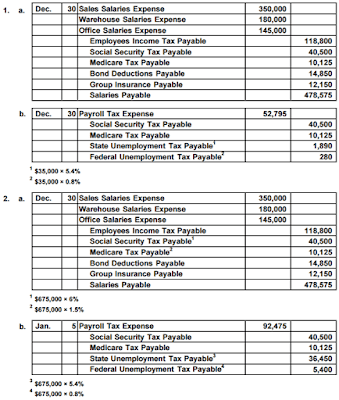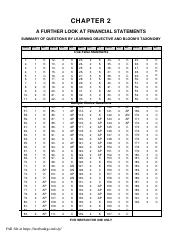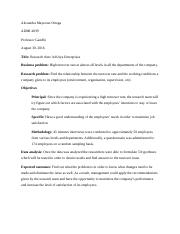Accounting Assumptions Explained
This concept ignores any change in the purchasing power of the dollar due to inflation. Companies may need to provide an estimation of projected gift card revenue and usage during a period based on past experience or industry standards. If the company determines that a portion of all of the issued gift cards will never be used, they may write this off to income. In some states, if a gift card remains unused, in part or in full, the unused portion of the card is transferred to the state government. It is considered unclaimed property for the customer, meaning that the company cannot keep these funds as revenue because, in this case, they have reverted to the state government. In order to record a transaction, we need a system of monetary measurement, or a monetary unit by which to value the transaction.
Free Cash Flow Levels the Playing Field – ETFdb.com
Free Cash Flow Levels the Playing Field.
Posted: Tue, 25 Jul 2023 07:00:00 GMT [source]
There are a handful of key assumptions and principles used to define accounting, which provides the structure for how a business “accounts” for the financial transactions and results of the business. Since different transactions occur, they are recorded and interpreted in various accounts in monetary terms. So, accounting helps to express heterogeneous economic activities in terms of money.
What are the key accounting assumptions in financial statements?
Conservatism states that if there is uncertainty in a potential financial estimate, a company should err on the side of caution and report the most conservative amount. The financial statements are prepared under the economic entity assumption, meaning that the business itself (or ‘entity’) is separate from the owners of the business and any other businesses. The entity Accounting Assumptions may only report activities on financial statements that are specifically related to their operations. When preparing their financial information, Felix only includes transactions related to FFF and not any personal transactions like the holiday he took to Japan. The going concern assumption assumes a business will continue to operate in the foreseeable future.

The historical performance of
a company is readily available, but examining the numbers does not always
provide the entire financial picture of a company. Pending or current lawsuits
are one example of a transaction that could severely impact a company’s bottom
line. In addition, incomplete financial transactions
or any other conditions that could impact the company’s performance must also
be disclosed. Most of these transactions are disclosed in the footnotes to the
financial statements. Historical Cost Principle – The historical cost principle deals with the valuation of both assets and
liabilities. The value at the time of
acquisition is used to value most assets and liabilities.
Improves comparability of financial statements through
Companies must continually monitor their environment and adjust assumptions accordingly to ensure accuracy and relevance over time. Accounting assumptions provide an objective basis for recording and reporting financial transactions, ensuring consistency among financial data users. A basic statement of financial position is a snapshot of the company’s financial situation at a point in time.

The cost principle, also known as the historical cost principle, states that virtually everything the company owns or controls (assets) must be recorded at its value at the date of acquisition. For most assets, this value is easy to determine as it is the price agreed to when buying the asset from the vendor. There are some exceptions to this rule, but always apply the cost principle unless FASB has specifically stated that a different valuation method should be used in a given circumstance.
In this article, we will learn about the subsidiary books, it’s types and purchase return books. Investors desire and demand that a company quickly process and disseminate information. Assets are valued for their individual worth rather than their value as a combined unit. Indeed, listing liabilities on the basis of priority in liquidation would be more reasonable. But if they are expressed in monetary terms – $7,000 cash, $50,000 for building, $2,00,000 for land, $8,000 for tables, $6,000 for fans, $1,60,000 for machines, $80,000 for raw material.
Need of Accounting
As per this assumption, a transaction is recorded at its money value on the date of occurrence, and the subsequent changes in the money value are conveniently ignored. This assumption has another serious limitation and is currently attracting the attention of accountants the entire world over. An individual, department, division, or an entire industry could be considered a separate entity if we choose to define it in this manner. In other words, the proprietor of an enterprise is always considered to be separate and distinct from the business which he controls.
FSS Permits Conditional Application of New Accounting Standards … – BusinessKorea
FSS Permits Conditional Application of New Accounting Standards ….
Posted: Fri, 28 Jul 2023 02:03:09 GMT [source]
A petty cash book is a record of minor cash expenditures, that are sorted by month and date. The Imprest system of petty cash books is regarded as one of the most used systems for maintaining a cash book. One of these two is called the simple petty cash book, and the other is the analytical petty cash book.
The period assumption
Since Accounts Payable increases on the credit side, one would expect a normal balance on the credit side. However, the difference between the two figures in this case would be a debit balance of $2,000, which is an abnormal balance. This situation could possibly occur with an overpayment to a supplier or an error in recording.

At the introductory level, the main principles, assumptions and concepts of accounting are very similar between IFRS and GAAP. And for persons who would like to begin a career in this exciting field, they will need to learn about the five key accounting assumptions as described above. Going ConcernThe going concern assumption means the business entity has no end date. Even if the farm business is organized as a sole proprietorship or partnership (where the business ends when the proprietor or either partner passes), this assumption is easily met by farmers and ranchers.
Suppose a company fails to account for certain transactions, revenues, or expenses. Accounting assumptions provide accountants with the essential framework for preparing financial statements. Accounting assumptions are the rules or suppositions that form the basis for a company’s accounting decisions and calculations.
In this case, it is going to record 1/12 of the annual expense as a monthly period cost. Overall, the “matching” of expenses to revenues projects a more accurate representation of company financials. When this matching is not possible, then the expenses will be treated as period costs. In conclusion, accounting assumptions provide the foundation for generally accepted accounting principles (GAAP). Although the development of accounting assumptions has evolved, the core purpose remains unchanged. The fundamental accounting assumptions are the assumptions made to generate financial statements according to generally accepted accounting principles.
The economic entity establishes the farm business as a separate entity from the owners and stakeholders. This is a challenging assumption given the ties between the farm and the operator. For example, most operators live on the farm and drive business vehicles as their own personal vehicles. Adherence to this rule would not result in operators owning two vehicles (a truck for the farm, a sedan for personal use). Instead, it would dictate that the operator divide the use of such assets between their business and personal use. I would argue the economic entity assumption is more important from a theoretical framework standpoint.
Keynes proposed that assumptions be built into economic models used to analyze the effects of policy decisions. It is a concept that can be defined as the degree to which one set of accounts or financial statements is identical. The most common form of going concern assumption is that the company will continue to generate sufficient cash flows from its ongoing operations to meet its obligations and provide for its future needs.
- A set of financial statements includes the income statement, statement of owner’s equity, balance sheet, and statement of cash flows.
- The basic accounting assumptions are like the pillars on which the structure of accounting is based.
- Accountants use this principle when preparing financial reports, such as income statements, to accurately measure how effectively the company has generated profits throughout the review period.
- GAAP are the concepts, standards, and rules that guide the preparation and presentation of financial statements.
This assumption states that businesses view themselves as continuing operations, not entities ready to be liquidated. It means companies are assumed to continue operations into the foreseeable future unless evidence suggests otherwise. Even with sound research and analysis, there are still some elements of uncertainty when making assumptions about the future performance of a company or industry sector.
 310total visits,7visits today
310total visits,7visits today